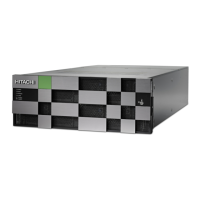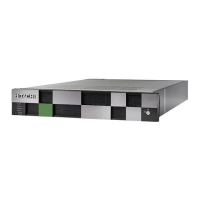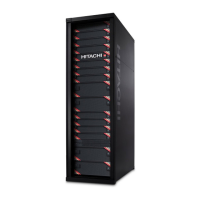SCSI TID Maps for Fibre-Channel Adapters A-1
Hitachi Universal Storage Platform V/VM Configuration Guide for SGI
®
IRIX
®
Host Attachment
SCSI TID Maps for Fibre-Channel
Adapters
When an arbitrated loop (AL) is established or re-established, the port
addresses are assigned automatically to prevent duplicate TIDs. With the SCSI
over fibre-channel protocol (FCP) there is no longer a need for target IDs in
the traditional sense. SCSI is a bus-oriented protocol requiring each device to
have a unique address since all commands go to all devices. For fibre channel,
the AL-PA is used instead of the TID to direct packets to the desired
destination. Unlike traditional SCSI, once control of the loop is acquired, a
point-to-point connection is established from initiator to target. To enable
transparent use of FCP, the SGI IRIX system “maps” a TID to each AL-PA.
The host maps SCSI protocol to fibre-channel protocol and detects and
accesses fibre-connected devices using device files (/dev/dsk/c*t*d* and
/dev/rdsk/c*t*d*) in the same way as for SCSI-connected devices. The device
files for fibre-connected devices are configured in a different way than SCSI-
connected devices because fibre supports 126 addresses per path while SCSI
supports 16 TIDs per path.
Table A-1 identifies the fixed mappings between the TID (drive) values
assigned by the IRIX system and the FC native addresses (AL_PA/SEL_ID) for
FC adapters. The controller number (the dks value in /dev/dsk/dks*d*l*s*)
depends on the server configuration and a different value is assigned per each
column of
Table A-1.
Note: The mapping defined in
Table A-1 cannot be guaranteed under the
following conditions:
When USP V devices and other types of devices are connected in the same
loop.
When information for unused devices remains in server system.
When multiple ports participate in the same arbitrated loop.

